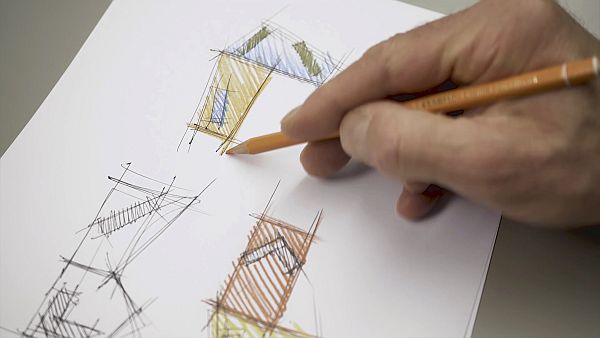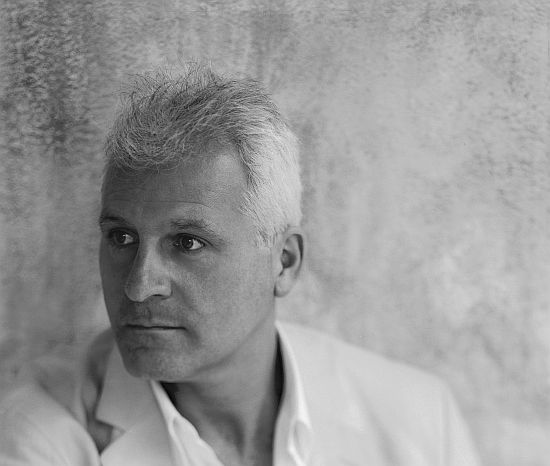
A world-wide pandemic combined with flash flooding in northern Italy threatened to delay our conversation with the multi award-winning Mauro Lipparini. As the creative power-house behind many of our best selling designs he has long been on our interview radar.
Those small considerations aside, and with the assistance of Mauro’s talented partner in both life and business, Michelle Richter, we finally caught up with this renowned designer who was hot-footing it between his Florence based studio and a work trip to Istanbul.
We think you’ll find his deep and thoughtful answers to our probing fascinating. So much so that we’ve decided to create two parts to his interview. Look out for Part II next week.
Mauro Lipparini x Bonaldo
Mauro’s collaboration with Italian manufacturer Bonaldo began in 2005. His latest collection for them focuses on Living, Dining and Home Office. Beautiful designs that work together and apart.
The Curling dining table
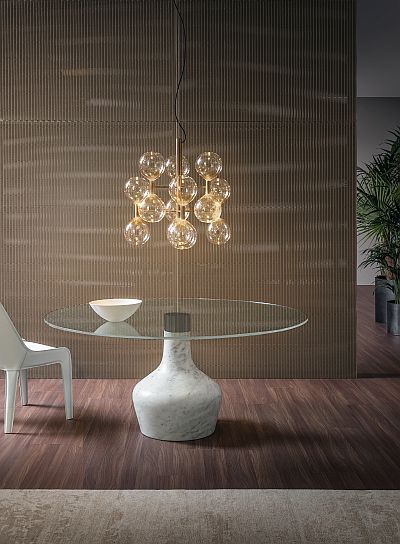
GM: Your new Bonaldo dining table, Curling, is spectacular. You’ve said the idea came to you on a visit to the Carrara marble quarries. Which came first: the design or the material?
ML: That’s not an easy question to answer. I knew I wanted to create a round table with a simple, central base: stable, rich, and elegant, sculpted from a block of marble with chiaroscuro effects. Contrasts of light to amplify the sense of volume in the modelling of its three-dimensional form.
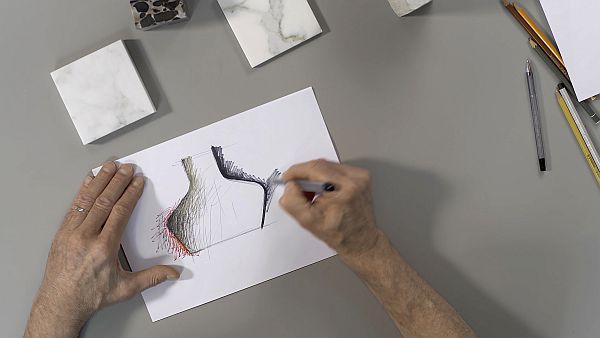
Michelangelo’s famous line guided me as I pursued my inspiration:
‘Every block of stone has a statue inside it, and it is the task of the sculptor to discover it.’
What better solution than a modernistic monolith. A single block with a soft curvaceousness; an embodiment of marble’s historical significance narrated by light and shadow.
The Gauss desk
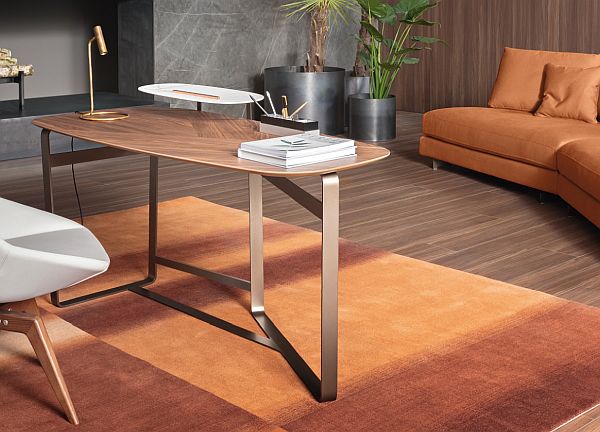
GM: You have also created two new writing desks for Bonaldo, Gauss and Scriba. Firstly, what was the idea behind the asymmetrical legs of Gauss?
ML: The Gauss desk is named in honour of the man known as ‘the foremost of mathematicians’ in part for his explorations into the differential geometry of surfaces. Gauss’s top has an irregular form with rounded edges. This evokes a natural, expressive freedom which converses with the asymmetry of the legs in a fluid, vibrant dialogue. It’s as if the legs have spontaneously joined the top, unfettered by the formal constraints of geometry.
This deceptively casual arrangement of the legs enters into a dance with the articulated veining patterns of the veneer top. The ensemble’s dynamic duo conveys a liberated spirit, fostering a relaxed, comfortable, and stimulating attitude towards working from home.
The Scriba desk
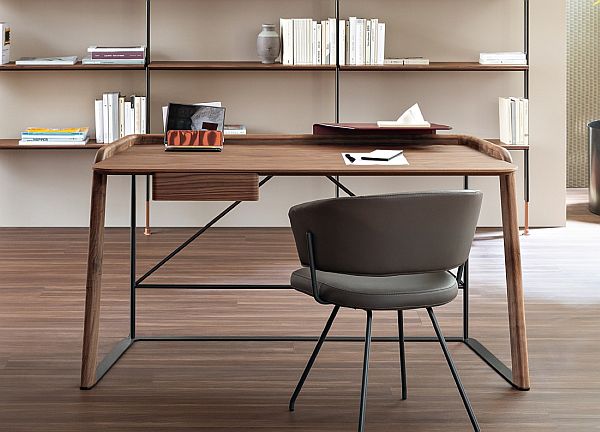
GM: Scriba has echoes of a traditional writing desk, and features walnut and leather. Do you have a favourite material to work with?
ML: I’m strongly attracted to working with natural materials. However the materials for each project must be coherent with its aesthetic and intellectual objectives. In that sense, Scriba’s form, materials, and even the name all share an ‘evergreen’ or ‘timeless’ essence, brought together in an entirely contemporary manner. The Canaletto walnut, metal, and leather reinterpret a classic material elegance. They exhibit an aesthetic maturity and refinement with a fresh, new voice.
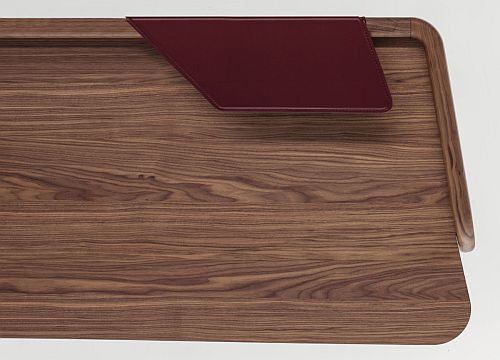
Scriba’s two accessories – the integrated small, suspended drawer and the optional emery leather shelf – allude to the poetic and epistolary passions of our forebears. It brings a sense of sophistication to any residential space.
Tètra sofa
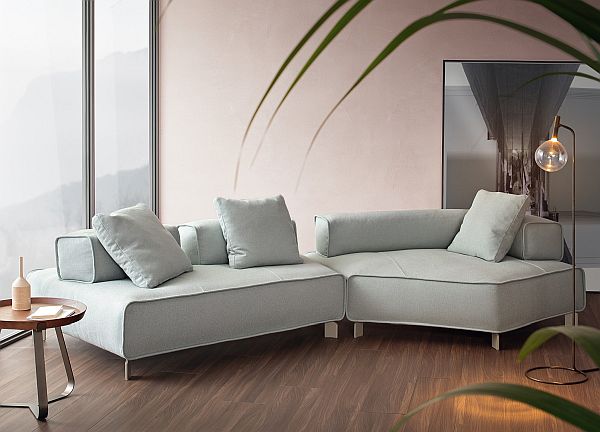
Tètra is meant to invite you to settle into it from virtually any angle, from whichever side of the sofa you happen to approach
GM: Your latest sofa for Boanldo is Tètra. It has a unique geometry. What were the ideas or influences behind this?
ML: Tètra emerged from the need I felt to deconstruct the established rules of fitted sofa configurations. Its asymmetrical geometries enhance its free-form compositional dynamic.
Tètra developed as I imagined novel, heterodox settings for the domestic environment. Ones in which the sofa plays a central role. It is without the traditionally conceived front and back, and offering totally flexible seating arrangements. Tètra is meant to invite you to settle into it from virtually any angle, from whichever side of the sofa you happen to approach.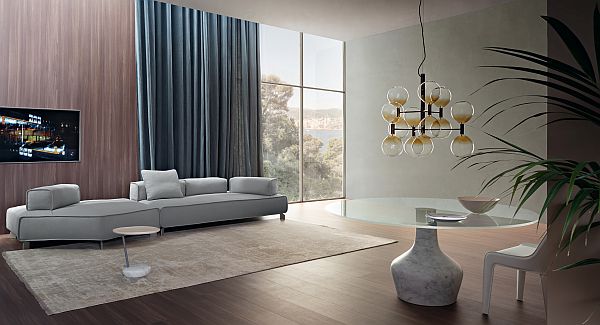
As an entirely contemporary interpretation of the Japanese tatami (a type of traditional Japanese mat) I want Tètra to be used without constraints. To be free of preconceived notions of how ergonomics and fitted elements are supposed to work together.
The idea is non-conformist but as straightforward as can be. It is functional comfort at 360 degrees. Thus it’s as if we’ve raised the floor of the home – itself a more inviting place to lounge – and turned it into something soft, endlessly accommodating, pleasurable.
A beautiful simplicity of style
GM: Something we feel that all your designs for Bonaldo have in common is a beautiful simplicity. A pure, clean minimalism which forgoes any overly fussy decoration. It’s a style we love and which feels part of your DNA. Have you always been attracted to this style?
ML: My minimalist ethos traces back to my high school days, when I first discovered the intersection of aesthetics and function in the Bauhaus and German modernism. Mies was an instant source of inspiration, catapulting me from Germany in the 1920s to the colour-field painters of 1940s and 1950s New York. The existential expressionism of Mark Rothko and Barnett Newman led me onward to the minimalist magic of Donald Judd.
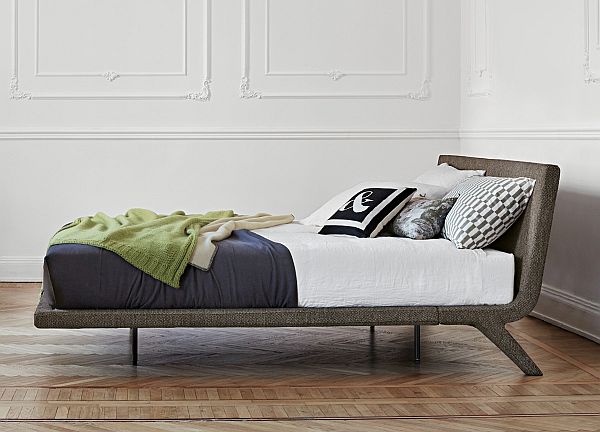
I’ve built on their synthesis of pure abstract geometries while integrating texture. This is not only as a physical, tactile element, but through the use of reflective surfaces capable of capturing and diffusing light in a variety of ways, while adding my own Mediterranean spirit to the mix.
Working with a broad range of materials, therefore, I’m always looking to highlight their chiaroscuro effects and their natural origins.
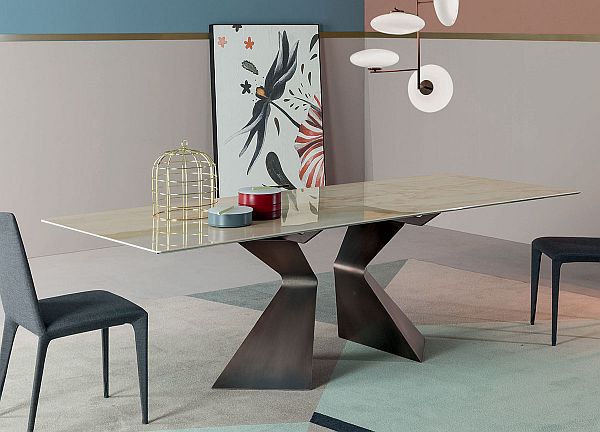
Essentialism
Minimalism has certainly informed my style, but does not in fact represent my stylistic ideal. That is because of its inherent limitations. If I had to label my style, I would call it ‘essentialism’, with a very personal use of rigorous, yet highly expressive forms.
Graphically powerful lines, delicate and refined shading, material contrasts of solid and empty spaces, transparency and opacity. All of these are elements through which we can achieve a creative, contemporary balance between ‘form and function’, between aesthetics and utility.
Of course, I avoid conventional expression. That’s because risk-taking is inherent to designing with pure forms and one of its core motivations.
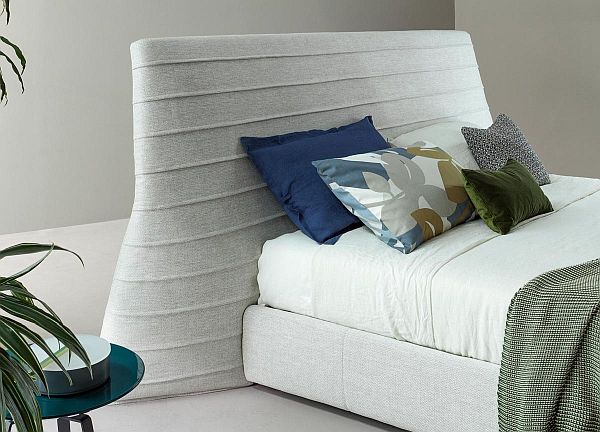
Pushing boundaries
GM: Studio Lipparini is based in the heart of Florence, the birthplace of the Renaissance, where you are surrounded by the architecture of that time. The Renaissance obviously had a huge influence on the rest of Europe and pushed the boundaries of what was known and could be achieved. Do you feel designers are still pushing boundaries in the same way? Or are there perhaps no more boundaries left to push?
ML: There are always boundaries to be pushed; the issue in our zeitgeist is that boundaries are increasingly fragmented and blurred. We see a great deal of cross-dissemination and ‘contamination’ that don’t actually breed anything of value, but choke off the space for worthy revivals and direction-altering discoveries. What we are experiencing are micro-‘renovations’ that impede true innovation.
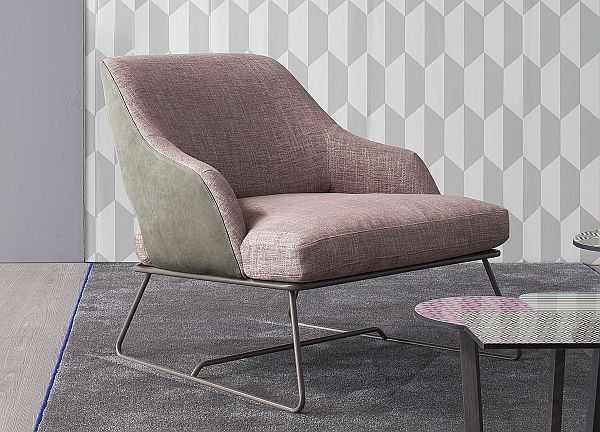
Renaissance influences
You touched on the Renaissance, which has had a profound influence on how I and the studio operate. Amid the hanging gardens on our upper floor is the studiolo, where I work, usually alone. Much of that work consists of intense, creative contemplation. In the workshop, or bottega, below, the members of the Studio Lipparini team bring the ideas formed upstairs to life.
Drawn from virtually every corner of Italy, they contribute their own perspectives and sensibilities as they perfect their skills in a practice that is truly multi-disciplinary, covering everything from the smallest pieces of furniture to the visual and environmental design, interior and exterior, of the grandest high-rises.
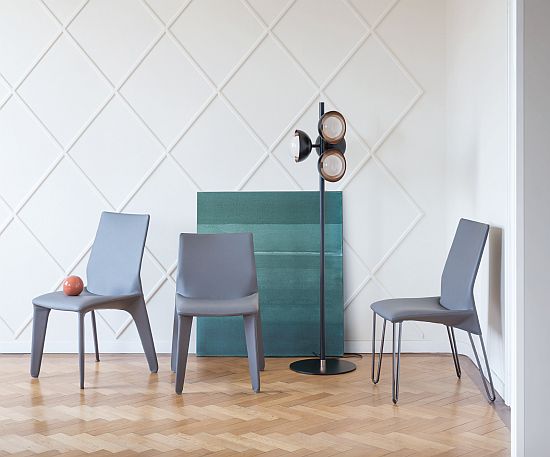
Never stop dreaming
GM: After your degree in architecture, you worked for a number of years as a professor at the University of Florence. What are the most important pieces of advice you would now pass on to students of design?
ML: A true understanding of the past is fundamental to innovating the future. The more profound the questions we ask about the past, the more we cultivate our curiosity, and the more sophisticated and creative our approach to innovation.
My advice is to never stop dreaming, to feel passionately about your profession, and to sustain a strong, personal identity without being fettered by what you imagine others expect of or want from you. Never lose your sense of adventure as you progress through the field of architecture and design!
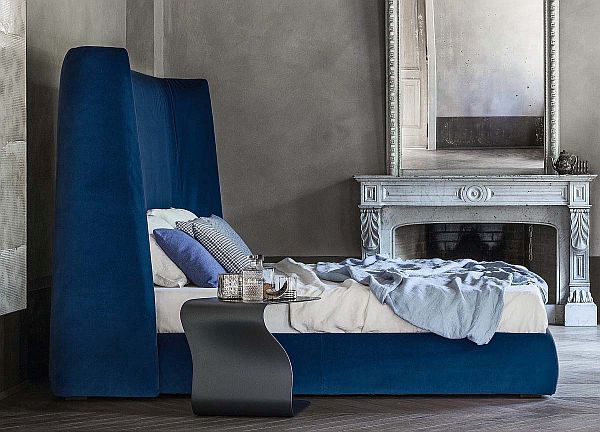
Another key point is to know how to use one’s hands. That’s because the application of our hands helps us to comprehend spatial relationships. These ultimately inform our ability to foresee the tactile/visual outcomes of what we’re designing. The process of hand drawing forges crucial points of connection with the mind. This is essential to what I call the ‘mental design project’; CAD (computer-assisted design) is a wonderful tool, but it doesn’t have the same power to create those physio-mental bonds.
Open your mind
I have to be open with each one of my projects and maintaining open-mindedness is an intrinsically dynamic process. My personal motto, which I seek to impart to my students, is ‘Open Your Mind’. Thanks to an open mind, I have gained an understanding of the world, of its myriad cultures and customs. I have had unique, unrepeatable experiences that hold lessons for everything I do.
Our thanks to Mauro for these wonderfully thought provoking answers and, of course, his incredible portfolio of designs for Bonaldo. Lookout for Part II of his interview next week.


